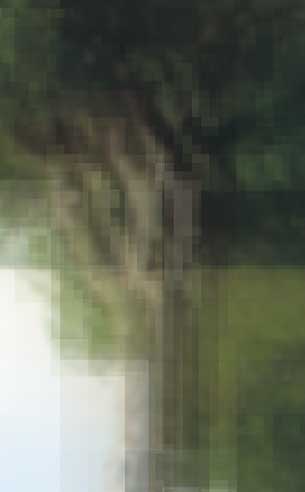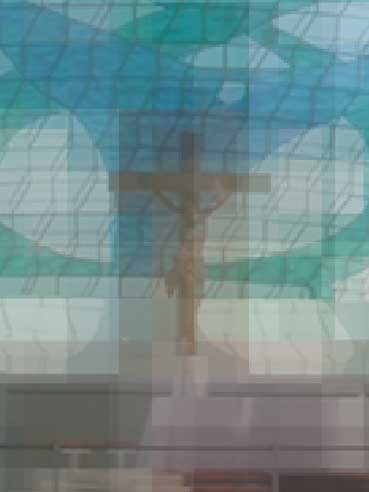

STATEMENT 4
My digital prints divide into two categories. In representational works such as Adjacencies and Accretions, I juxtapose photographs, often many per sheet, in the hope that these constructions will expand the viewer's sense of the seen world, and of space, intensifying each image. With Northern Renaissance painting as one key inspiration, I dream of making the world feel new again. The source for Permutations 1: Reuss River is 180 photographs of a river, 30 shot from each of six positions, juxtaposed in varying ways via a controlled use of random numbers. As with much of my subsequent work, these are editions of one, offering uniqueness while also arguing that many different arrangements can be equally true. Randomness is used to try to lead away from individual preferences by offering a wider range of possibilities that, if my engagement with them is successful, will be converted into a diversity of luminous visions.
Other works are more abstract. Colors 1: Transitions has suggested, to more than one viewer, the experience of watching the sunrise: while the differences between adjacent rectangles are imperceptible, the change from first to last is large. In the recent Figments, a single digital image is juxtaposed with 47 lower-resolution "elements," each constructed somewhat differently. One goal is to create a feeling that the inner machinery of the digital image is exposed, its various parts seeming to grind against each other. Another is to try to present all these versions of an image, from the original to its reduction to a single solid color, as equally authentic, equally beautiful, and equally "true." In the "Supers" portion, different elements are superimposed, while in the "Clouds" portion, fragments from some of those superimpositions are enlarged, in the hope of creating a series of suggestive, inexplicable mysteries.
In the spirit of my key inspirations, which in addition to van Eyck and Dürer include Georges de la Tour and Cézanne and the great Medieval and Renaissance polyphonic composers from Léonin and Pérotin to Ockeghem, Obrecht and Lasso, and, later, J. S. Bach, I hope that my work rewards quiet, intensely focused viewing, an alternative to a culture drowning in surface effects and noise. As in older art, I am attempting to make works in which complex internal relationships between parts result in deep aesthetic pleasure. Of course, the results are rendered very imperfectly on the Web. Gerhard Richter is another key influence, as is cinema, for the ways in which in the greatest films, whether by Rossellini or Brakhage or John Ford, images combine in time to create distinctive types of space. I will be gratified if, at least on occasion, it should feel as if the different elements in my works are somehow exchanging breaths.
Fred Camper
Chicago, Illinois
June 14, 2009.